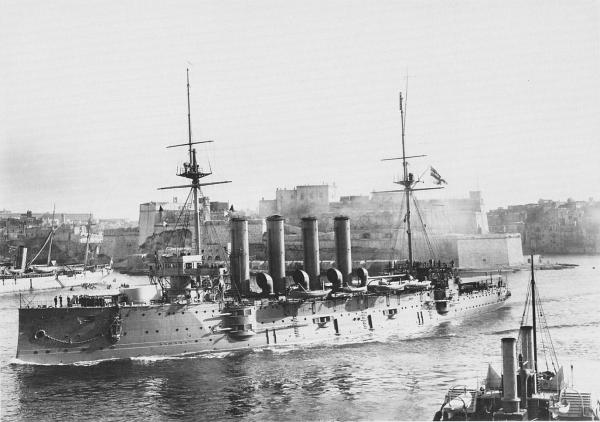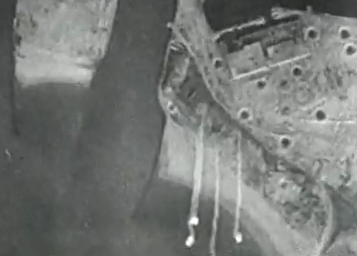|
Action Of 22 September 1914
The Action of 22 September 1914 was an attack by the German U-boat that took place during the First World War. Three obsolete Royal Navy cruisers, of the 7th Cruiser Squadron, manned mainly by Royal Naval Reserve part-time reservists and sometimes referred to as the Live Bait Squadron, were sunk by ''U-9'' while patrolling the southern North Sea. Neutral ships and trawlers nearby began to rescue survivors but 1,459 British sailors were killed. There was a public outcry in Britain at the losses. The sinkings eroded confidence in the British government and damaged the reputation of the Royal Navy, when many countries were still unsure about taking sides in the war. Background The cruisers were part of the Southern Force (Rear-Admiral Arthur Christian) composed of the flagship , the light cruiser and the 7th Cruiser Squadron (7th CS, also known as Cruiser Squadron C, Rear-Admiral H. H. Campbell, nicknamed the ''live-bait squadron''), comprising the armoured cruisers , , , and ... [...More Info...] [...Related Items...] OR: [Wikipedia] [Google] [Baidu] |
First World War
World War I (28 July 1914 11 November 1918), often abbreviated as WWI, was one of the deadliest global conflicts in history. Belligerents included much of Europe, the Russian Empire, the United States, and the Ottoman Empire, with fighting occurring throughout Europe, the Middle East, Africa, the Pacific, and parts of Asia. An estimated 9 million soldiers were killed in combat, plus another 23 million wounded, while 5 million civilians died as a result of military action, hunger, and disease. Millions more died in genocides within the Ottoman Empire and in the 1918 influenza pandemic, which was exacerbated by the movement of combatants during the war. Prior to 1914, the European great powers were divided between the Triple Entente (comprising France, Russia, and Britain) and the Triple Alliance (containing Germany, Austria-Hungary, and Italy). Tensions in the Balkans came to a head on 28 June 1914, following the assassination of Archduke Franz Ferdina ... [...More Info...] [...Related Items...] OR: [Wikipedia] [Google] [Baidu] |
English Channel
The English Channel, "The Sleeve"; nrf, la Maunche, "The Sleeve" (Cotentinais) or ( Jèrriais), (Guernésiais), "The Channel"; br, Mor Breizh, "Sea of Brittany"; cy, Môr Udd, "Lord's Sea"; kw, Mor Bretannek, "British Sea"; nl, Het Kanaal, "The Channel"; german: Ärmelkanal, "Sleeve Channel" ( French: ''la Manche;'' also called the British Channel or simply the Channel) is an arm of the Atlantic Ocean that separates Southern England from northern France. It links to the southern part of the North Sea by the Strait of Dover at its northeastern end. It is the busiest shipping area in the world. It is about long and varies in width from at its widest to at its narrowest in the Strait of Dover."English Channel". ''The Columbia Encyclopedia'', 2004. It is the smallest of the shallow seas around the continental shelf of Europe, covering an area of some . The Channel was a key factor in Britain becoming a naval superpower and has been utilised by Britain as a natural def ... [...More Info...] [...Related Items...] OR: [Wikipedia] [Google] [Baidu] |
Commander
Commander (commonly abbreviated as Cmdr.) is a common naval officer rank. Commander is also used as a rank or title in other formal organizations, including several police forces. In several countries this naval rank is termed frigate captain. Commander is also a generic term for an officer commanding any armed forces unit, for example "platoon commander", "brigade commander" and "squadron commander". In the police, terms such as "borough commander" and "incident commander" are used. Commander as a naval and air force rank Commander is a rank used in navies but is very rarely used as a rank in armies. The title, originally "master and commander", originated in the 18th century to describe naval officers who commanded ships of war too large to be commanded by a lieutenant but too small to warrant the assignment of a post-captain and (before about 1770) a sailing master; the commanding officer served as his own master. In practice, these were usually unrated sloops-of-war of no ... [...More Info...] [...Related Items...] OR: [Wikipedia] [Google] [Baidu] |
Wenman Wykeham-Musgrave
Wenman Humfrey "Kit" Wykeham-Musgrave (1899–1989) was a Royal Navy officer who has the possibly unique distinction of having survived being torpedoed on three different ships on the same day. He was born on 4 April 1899 at Barford, Warwick, Warwickshire, England, the son of Herbert Wenman Wykeham-Musgrave and his wife Gertrude St. Aubyn Walrond, daughter of the Rev. Main Swete Alexander Walrond. He was educated at Royal Naval College, Osborne, Isle of Wight, and at Royal Naval College, Dartmouth He was serving as a midshipman aboard when, on the morning of 22 September 1914, HMS ''Aboukir'', and , three armoured cruisers, were on patrol in the Broad Fourteens off the Dutch coast. They were attacked by the German U-Boat ''U-9'', which was under the command of Kapitänleutnant Otto Weddigen. Wykeham-Musgrave's daughter, Pru Bailey-Hamilton, recounted the tale of his torpedoing during a BBC interview in 2003: "He went overboard when the ''Aboukir'' was going down and ... [...More Info...] [...Related Items...] OR: [Wikipedia] [Google] [Baidu] |
IJmuiden
IJ_(digraph).html" ;"title="n IJ (digraph)">n IJ (digraph) and that should remain the only places where they are used. > IJmuiden () is a port city in the Netherlands, Dutch province of North Holland. It is the main town in the municipality of Velsen which lies mainly to the south-east. Including its large sea locks, it straddles the mouth of the North Sea Canal to Amsterdam. To the south it abuts a large reserve of plant-covered dunes, the Zuid-Kennemerland National Park. The city is on the south bank; the north bank is otherwise a steel plant and Velsen-Noord. It is north northwest of Haarlem which is due west of Amsterdam. The port is a deepwater port suited to fully laden Panamax ships, and fourth port of the Netherlands. The internal capitalization within IJmuiden is as IJ is a digraph in modern Dutch so in some typefaces recognised as a ligature which places it in one typed or handwritten space. History In the Roman era, the district was already inhabited, a ... [...More Info...] [...Related Items...] OR: [Wikipedia] [Google] [Baidu] |
Reuterdahl - HMS Cressy Sinking (1870–1925), Swedish-American painter
{{surname ...
Reuterdahl is a surname. Notable people with the surname include: * Arvid Reuterdahl (1876–1933), Swedish-American engineer, scientist, and educator * Henrik Reuterdahl (1795–1870), Swedish Lutheran clergyman *Henry Reuterdahl Henry Reuterdahl (August 12, 1870 – December 21, 1925) was a Swedish-American painter highly acclaimed for his nautical artwork. He had a long relationship with the United States Navy. In addition to serving as a Lieutenant Commander in the U ... [...More Info...] [...Related Items...] OR: [Wikipedia] [Google] [Baidu] |
Lowestoft
Lowestoft ( ) is a coastal town and civil parish in the East Suffolk district of Suffolk, England.OS Explorer Map OL40: The Broads: (1:25 000) : . As the most easterly UK settlement, it is north-east of London, north-east of Ipswich and south-east of Norwich, and the main town in its district. The estimated population in the built-up area exceeds 70,000. Its development grew with the fishing industry and as a seaside resort with wide sandy beaches. As fishing declined, oil and gas exploitation in the North Sea in the 1960s took over. While these too have declined, Lowestoft is becoming a regional centre of the renewable energy industry. History Some of the earliest signs of settlement in Britain have been found here. Flint tools discovered in the Pakefield cliffs of south Lowestoft in 2005 allow human habitation of the area to be traced back 700,000 years.S. Parfitt et al. (2006'700,000 years old: found in Pakefield', ''British Archaeology'', January/February 2006. Retrieve ... [...More Info...] [...Related Items...] OR: [Wikipedia] [Google] [Baidu] |
Chaplain
A chaplain is, traditionally, a cleric (such as a Minister (Christianity), minister, priest, pastor, rabbi, purohit, or imam), or a laity, lay representative of a religious tradition, attached to a secularity, secular institution (such as a hospital, prison, Military organization, military unit, intelligence agency, embassy, school, labor union, business, Police, police department, fire department, university, sports club), or a private chapel. Though originally the word ''chaplain'' referred to representatives of the Christian faith, it is now also applied to people of other religions or philosophical traditions, as in the case of chaplains serving with military forces and an increasing number of chaplaincies at U.S. universities. In recent times, many lay people have received professional training in chaplaincy and are now appointed as chaplains in schools, hospitals, companies, universities, prisons and elsewhere to work alongside, or instead of, official members of the clergy ... [...More Info...] [...Related Items...] OR: [Wikipedia] [Google] [Baidu] |
Action Of 22 September 1914 - EN
Action may refer to: * Action (narrative), a literary mode * Action fiction, a type of genre fiction * Action game, a genre of video game Film * Action film, a genre of film * ''Action'' (1921 film), a film by John Ford * ''Action'' (1980 film), a film by Tinto Brass * ''Action 3D'', a 2013 Telugu language film * ''Action'' (2019 film), a Kollywood film. Music * Action (music), a characteristic of a stringed instrument * Action (piano), the mechanism which drops the hammer on the string when a key is pressed * The Action, a 1960s band Albums * ''Action'' (B'z album) (2007) * ''Action!'' (Desmond Dekker album) (1968) * ''Action Action Action'' or ''Action'', a 1965 album by Jackie McLean * ''Action!'' (Oh My God album) (2002) * ''Action'' (Oscar Peterson album) (1968) * ''Action'' (Punchline album) (2004) * ''Action'' (Question Mark & the Mysterians album) (1967) * ''Action'' (Uppermost album) (2011) * ''Action'' (EP), a 2012 EP by NU'EST * ''Action'', a 1984 al ... [...More Info...] [...Related Items...] OR: [Wikipedia] [Google] [Baidu] |
Naval Mine
A naval mine is a self-contained explosive device placed in water to damage or destroy surface ships or submarines. Unlike depth charges, mines are deposited and left to wait until they are triggered by the approach of, or contact with, any vessel or a particular vessel type, akin to anti-infantry vs. anti-vehicle mines. Naval mines can be used offensively, to hamper enemy shipping movements or lock vessels into a harbour; or defensively, to protect friendly vessels and create "safe" zones. Mines allow the minelaying force commander to concentrate warships or defensive assets in mine-free areas giving the adversary three choices: undertake an expensive and time-consuming minesweeping effort, accept the casualties of challenging the minefield, or use the unmined waters where the greatest concentration of enemy firepower will be encountered. Although international law requires signatory nations to declare mined areas, precise locations remain secret; and non-complying individ ... [...More Info...] [...Related Items...] OR: [Wikipedia] [Google] [Baidu] |
Ostend
Ostend ( nl, Oostende, ; french: link=no, Ostende ; german: link=no, Ostende ; vls, Ostende) is a coastal city and municipality, located in the province of West Flanders in the Flemish Region of Belgium. It comprises the boroughs of Mariakerke, Raversijde, Stene and Zandvoorde, and the city of Ostend proper – the largest on the Belgian coast. History Origin to Middle Ages In the Early Middle Ages, Ostend was a small village built on the east-end () of an island (originally called Testerep) between the North Sea and a beach lake. Although small, the village rose to the status of "town" around 1265, when the inhabitants were allowed to hold a market and to build a market hall. The major source of income for the inhabitants was fishing. The North Sea coastline has always been rather unstable due to the power of the water. In 1395 the inhabitants decided to build a new Ostend behind large dikes and further away from the always-threatening sea. 15th to 18th century The s ... [...More Info...] [...Related Items...] OR: [Wikipedia] [Google] [Baidu] |





